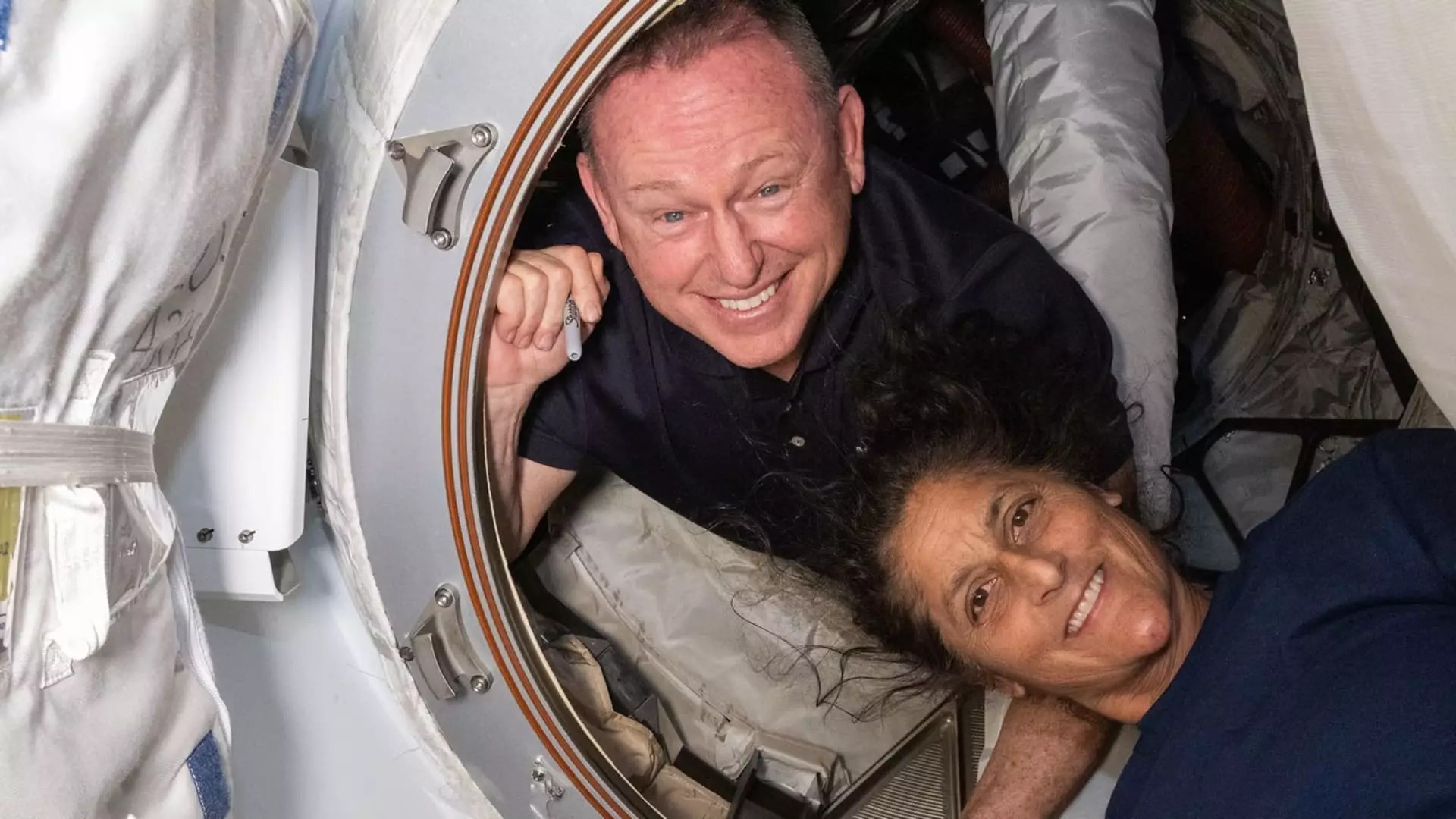The saga of astronauts Butch Wilmore and Suni Williams is one that defies the original intent of a straightforward mission. Initially, they embarked on what was meant to be a mere nine-day test flight aboard Boeing’s Starliner capsule, Calypso. Instead, they found themselves stranded in the cosmos for an astonishing nine months due to a series of catastrophic failures related to their spacecraft’s thrusters. The irony is palpable: a mission designed to be a stepping stone in NASA’s partnership with Boeing has morphed into a public relations mess and a resurgence of doubts about Boeing’s reliability.
It is troubling that a test meant to bolster American spaceflight capabilities revealed vulnerabilities that could potentially jeopardize future missions. This is particularly disheartening when considering the estimated $2 billion loss that Boeing has accrued in attempting to validate its Starliner program. The failure has broader implications: it tarnishes not only Boeing’s public image but also the trust in NASA’s ability to manage private partnerships in an endeavor as critical as human space travel.
Political Undercurrents and Public Sentiment
One cannot ignore the political ramifications entwined in this cosmic drama. The shift in the astronauts’ fates became a contentious topic once President Trump took office. Claims made by Trump and his ally Elon Musk painted a picture of Wilmore and Williams as ‘stranded’ victims of political maneuvering, alleging that the Biden administration might be withholding their return to the International Space Station (ISS) for its own purposes. Such politically charged rhetoric muddied the waters of an already complicated situation and raised concerns about the manipulation of facts for electoral gain.
While either administration could certainly be faulted for their approach, it’s crucial to recognize that space mission timelines are often influenced by technical challenges—not purely political agendas. The narrative that portrayed NASA as incapable of managing schedules while caught in the crossfire of political drama is unproductive and counterproductive. It casts a long shadow over the space agency that deserves better, especially given its historically sound track record in human space exploration.
SpaceX to the Rescue
In the face of Boeing’s failures, NASA opted to pivot toward its successful partnership with SpaceX. This marks a crucial moment not merely for logistical reasons, but also as an endorsement of private sector capabilities in the aerospace arena. By relying on the tried-and-true SpaceX Dragon for their return, Wilmore and Williams are emblematic of a shift in trust—a movement toward the commercial sector that could redefine NASA’s operational future.
Yet, this decision raises questions: While it is commendable that NASA has backup plans in place, does an over-reliance on a single private company create a monopoly in space missions? Is NASA, in its quest to ensure timely returns for astronauts, inadvertently creating a dependency that could stifle competition?
The Human Aspect of Space Exploration
Throughout their extended stay, both astronauts adapted remarkably well under challenging circumstances, eagerly participating in scientific research and daily maintenance of the ISS. Williams conducted a spacewalk, showcasing her knack for resilience and adaptability, but she consistently expressed that neither felt forsaken. In a deeply human moment, she articulated the mixed emotions felt by astronauts living away from home—years of training and preparation would culminate in days fraught with uncertainty.
Their experience serves as a reminder of the human dimension of space exploration, shedding light on the sacrifices made by all astronauts. While a mission is often celebrated for its accomplishments, we mustn’t overlook the profound emotional toll on individuals who risk their lives for research and exploration.
Lessons Learned and the Path Forward
This entire episode, intended to be a leap forward for U.S. space ambitions, has served as a cautionary tale of the unintended consequences that arise from combining governmental and corporate strategies. Boeing’s promises to restore credibility remain unfulfilled, and that left nearly a year’s wait time contemplating whether their technologies are even ready for prime time. As we watch America’s space program evolve, the critical takeaway is the importance of accountability—companies must not only good intentions, but the actual capability to deliver on promises.
NASA’s integrity is anchoring the future of American space exploration, and its resolute response to adversities—steering clear of pieties and moving toward evidence-based solutions—will shape its trajectory. As we look ahead, we must advocate for solutions that prioritize safety and reliability, ensuring that the incredible human spirit remains at the forefront of our celestial endeavors.


Leave a Reply